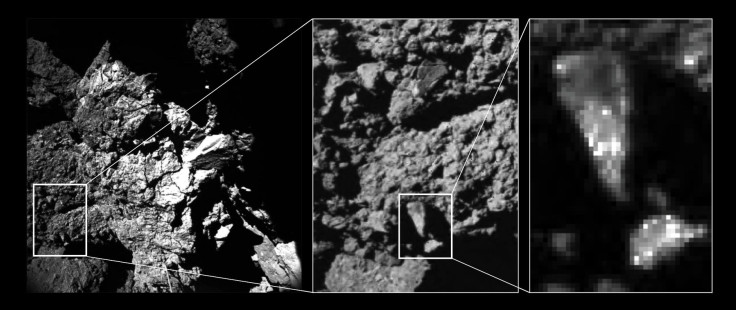Rosetta’s Philae Lander Unleashes Surprises, Including Key Ingredients For Life On Comet

The first scientific analysis of the data about the Comet 67P/Churyumov-Gerasimenko, provided by Rosetta spacecraft’s Philae lander last November, has revealed several cometary surprises. According to scientists at the European Space Agency (ESA), the comet’s surface has complex molecules that could be key building blocks of life.
The early results of the observations, published in the journal Science on Friday, also revealed that the temperature on Comet 67P rises and falls on a daily basis. The data also helped scientists assess the surface properties and the internal structure of the comet. Ever since Rosetta reached the comet last August and subsequently deployed the Philae lander on Nov. 12, the spacecraft has been monitoring how the comet’s corona of dust and gas grows as it moves closer to the sun.
“Taken together, these first pioneering measurements performed on the surface of a comet are profoundly changing our view of these worlds and continuing to shape our impression of the history of the Solar System,” Jean-Pierre Bibring, a lead lander scientist at the Institut Aéronautique Et Spatial (IAS) in Orsay, France, said in a statement.

Following the first touchdown on the comet’s surface, Rosetta’s Philae used two devices, called COSAC and Ptolemy, to analyze samples from the comet. According to scientists, analysis by COSAC revealed a set of 16 organic compounds, four of which have never been detected on comets before. Ptolemy helped detect the main components of coma gases, including water vapor, carbon monoxide and carbon dioxide, along with smaller amounts of carbon-bearing organic compounds.
Scientists said that some of these compounds, detected by COSAC and Ptolemy, could play a key role in the formation of amino acids, sugars and nucleobases -- the ingredients for life.
“One of the big questions, though, is this material made on the comet? Or is it made first in space and then incorporated into the comet? We don't know the answer to that yet,” Mark McCaughrean, ESA’s senior science advisor, told BBC.
© Copyright IBTimes 2025. All rights reserved.






















